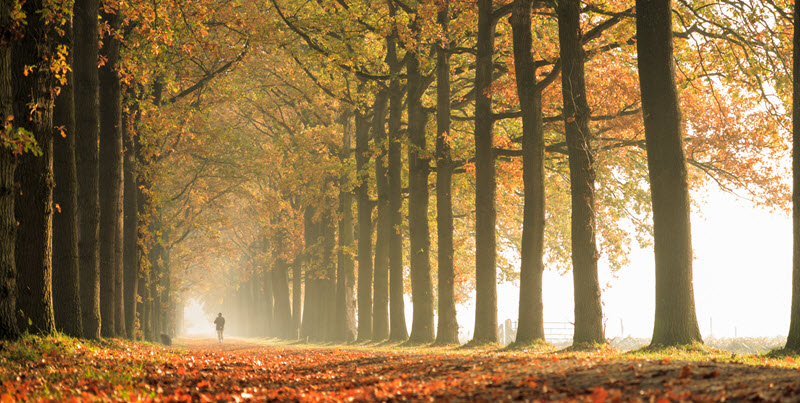| By Sarah Robertson |
Published in 1916, Robert Frost’s most popular poem, “The Road Not Taken” (Poetry for Students Volume 2 and Poetry for Students Volume 61), is conventionally understood to be a meditation on the choices we make when confronted with a fork in the road. Despite its popularity, the work is perhaps one of Frost’s most misread poems, acquiring an optimistic, individualistic meaning not necessarily present in the text. Is the poem really about individualism and choosing one’s own path? Or does the poem suggest the choice itself does not matter because all choices are equally valid and equally meaningless? The poem’s autumnal setting may lead to an answer.
Frost begins “The Road Not Taken” describing two roads splitting in a yellow wood, challenging the narrator with a choice of which to take. Painting the woods yellow suggests the speaker is out for an autumn stroll when confronted with this consequential—or inconsequential, depending on interpretation—decision. Additionally, Frost refers to the path as grassy, meaning winter has not yet set in. Finally, the third stanza mentions leaves lining the path.
Why does the season matter? In poetry, imagery associated with autumn is conventionally used to evoke feelings of nostalgia, decay, and death. It is a trope Frost used in another poem, “Nothing Gold Can Stay” (Poetry for Students Volume 3), where he laments the fleeting beauty of summer and the onset of autumn. Just as he does in “Nothing Gold Can Stay,” Frost employs an autumn setting in “The Road Not Taken” to evoke a mournful setting, not a cheerful one.
Frost is perhaps using autumn to conjure regrets, aging, and the grim inevitability of human mortality. Memory, longing, and a life once full of potential all come to the surface as the narrator stands at the crossroads, confronted by the weight of choices and the potential—and peril—of another.
While many read “The Road Not Taken” as a triumph of individualism and a call to pave one’s own path, the autumn setting suggests a bleaker meaning. In the third stanza, Frost describes the two paths as equal, meaning there is no right or wrong choice. The speaker will claim the choice of road has made all the difference, but in reality, it did not matter because surely something good was missed by taking one path over another. The speaker’s sigh in the final stanza is heavy, much like the misty fall air and the season’s darker days.
Choosing how to interpret “The Road Not Taken” is also an exercise in choosing between two paths. Neither meaning is correct or incorrect, but the act of making a choice reflects how a life is made, through the slow accumulation of decisions. Frost invites the reader to participate in the act of choosing when he presents us with the many ambiguities of his text.
Perhaps, rather than assigning a definitive meaning to Frost’s work, we should simply reflect on the experience of walking through the woods on an autumn day.
Perhaps, that is enough.
We invite you to celebrate autumn with For Students! “The Road Not Taken” is one of many autumn-themed poems in the For Students collection.
Poetry for Students is available in print and eBook format on our platform, Gale eBooks.
Meet the Author
Sarah Robertson is a writer, editor, and longtime contributor to For Students.

